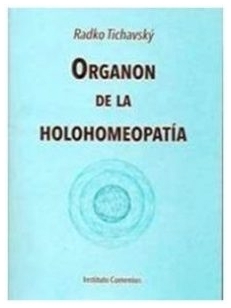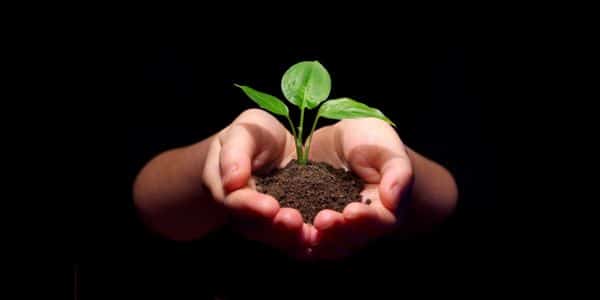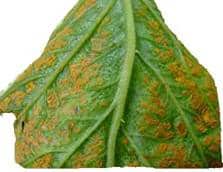Radko Tichavsky is a Czech born Mexican Agrohomeopath. He is a co-founder and director of Instituto Comenius in Mexico and author of Handbook of Agrohomeopathy, 2007 (Spanish) and Homeopathy for Plants, 2009 (Spanish), Organon de la Holohomeopatía and creator and teacher of Holohomeopathy.
He is now offering a one semester virtual course in Holohomeopathy (in English). You can learn how to define and analyze holons and how to repertorize the specific homeopathic treatment beyond just disease or pest names. You can find out more here: www.icomenius.edu.mx
NEW BOOK:
Organon de la Holohomeopatía
Six years in the making, it is the latest book by Radko Tichavsky, researcher on the application of homeopathy in agriculture. This Spanish language book covers homeopathic interventions in agriculture from the holistic view, allowing greater certainty in repertorizations. It addresses a novel concept of metabolic similarity, not only among plants, but also among different species of the animal and plant kingdom. It studies the formation and dynamics of attractors, areas of greater vitality within the holons and coexistence units of different living organisms Holohomeopathy is a fascinating contribution to the application of homeopathy to plants. It allows one to discover a universe of surprising relations in vital dynamism. It puts into the hands of the agricultural producer a valuable tool for the successful handling of pests and diseases in crops of any size. For ordering or information: [email protected]

Dear Mr. Tichavsky,
I am writing to seek advice on helping to heal our farm ecosystem that consists of two acres of fallow grazing land (for 40+ years) that is being revitalized using various methodologies. Some of our trees look the healthiest in the early Spring and then show signs of disease as the year progresses. I am attaching results from a 2019 soil test and also some photographs to show some of our symptoms. Could you provide some recommendations on what we can do to heal our farm ecosystem?
The farm is in Muhlenberg County, Kentucky (Zipcode 42321) (USDA Hardiness Zone 6b). The average temperature is 57.9 degrees F and an average of 48 inches of rain per year for the county. The farm is said to have high water tables compared to the some of the other farms in the area. The farm has the highest point in the county as well as the lowest point in the county.
Soil Test Results (below)



Thank you
Sincerely,
Obiora Embry – CEO/Eco-Conscious Consultant, EConsulting™ | https://www.econsultingllc.org
Radko Tichavsky:
Dear Obiora,
The agricultural systems depending on the type of crop (if they are herbaceous plants or trees) require a different balance between bacteria and fungi.
Typically the herbaceous plants require a great bacterial activity and the trees require predominance of endomycorhizic, ectomycorhizic fungi.
If this natural variability is not respected, what can easily happen, under the regime of organic agriculture with applications of bacterial ferments, are pathologies like those shown in the photograph.
Nutrient analyses are the result and not the cause of this imbalance. The microorganisms establish the balance and availability of nutrients for the crops and not so much what the farmer can add to the garden in the form of compost preparations and natural nutrients brought in from outside.
The solution is first to decrease the number of bacteria in the soil and increase the endo- and ecto-mycorhizal fungi. Very useful are the Glomerulaceas (Glomus intraradices can be the first to consider).
The next step is to apply Colchicum autumnale 6 CH. Colchicine has been studied since the 1930’s as one of the substances that cause polyploidy (a multiple replication of DNA within plants and within microorganisms as well) and polyploidy increases the possibility of mycorhizal fungi to establish themselves with a higher degree of collaboration in the plant.
The third step is called “epigenetic balancing”, which consists in increasing the amplitude of the epigenetic response of plants and microorganisms, which can be achieved with one or two applications of Silicea terra 200 CH (unique application) and several applications (one per month) of Acidum salycicum 6 CH.
Dear Mr. Tichavsky,
Last year the Chinese Yellow Beetle attacked my cucumbers. The vine just started wilting and died. I’m in Toronto and we haven’t gotten much rain.
Thank you
Gudi
Radko Tichavsky:
Dear Gudi,
The Chinese Yellow Beetle is easy to control with one or two applications of Larrea tridentata 6 CH with a little olive oil as an adjuvant (20 ml of oil for every 20 litres of homeopathic preparation) applied by spraying.
In cucumbers it is very important not to exceed the limits of nitrogen in the soil, and to apply preventively once a week Calcarea carbonica 6 CH, which will harden the leaf surface and make it difficult for the adult beetles to feed.
As far as the vine is concerned, it is a semi-desert plant and excess water can affect it. One possibility is to add river sand to the soil to increase permeability and drainage of excess water.
The other is to increase the resistance of the vine plants by inoculating useful microorganisms such as Pisolithus arhizus or Pisolithus tinctorius, P. marmoratus and others that you can easily find in the first 5 centimetres of soil under the oaks (Quercus sp.).
You collect some superficial soil under the oaks and dissolve it in water and for each bucket you add 1 liter of mineral water (of bubbles), with this mixture you water the soil around the grapes in one occasion to facilitate the establishment of the fungus. Once inoculated, you can apply two or three times Calcarea carbonica 6 CH and Carbo vegetabilis 6 CH once a month.
Once the mycorrhizal fungus is established, you don’t have to do anything else but wait for the grapes to be harvested. Greetings!
Dear Mr. Tichavsky,
We have some Japanese Maple trees her in Blakeney, Norfolk, UK (mailing code: NR25 7BD). They are infested with the Citrus Longhorn Beetle (Anoplophora chinensis) which is normally found in South East Asia. We’d like to stop the damage they are doing without using toxic chemicals. Is there any way?
Thank you
Harriet
Radko Tichavsky:
Dear Harriet,
The Acer sp. is susceptible to attack by the Asian ceramid beetle which is xylophagous (i.e. it consumes and destroys wood). Exotic Anoplophora chinensis was detected in Europe first in Lombardy, Italy, in 2000; in France (2003) then in the Netherlands (2004 and 2010) and later in the rest of continent.
The main homeopathic remedy is Camphora 3 CH with soybean oil as an adjuvant (20 ml per 20 litres). The trees should be sprayed once a month. Camphora 3 CH acts against both larvae and adults quite effectively (85%-100%) and also has a repellent action against this ceramide.
Dear Mr. Tichavsky,
Our peach trees were affected by Brown rot fungus (Monolinia fructicola) this past summer. The peaches and branches were covered with spores. We live in De Soto County Florida (zipcode 33865) where the weather is hot and damp. Can we do something next season to prevent this?
Thank you
Henry Williams
Radko Tichavsky:
Dear Henry,
Peach trees require to have a balance between the fungal and bacterial community, in this case the predominance of the fungi, but excess of fungi along with the hot and humid conditions and the cycle of replication and sporulation of the affected fruits present a vicious cycle.
Fruits affected by Monolinia fructifera must be collected and composted apart from the orchard to avoid the dispersion of basidiospores. As a first step you should complement the green cover between the trees by enriching it with Salvia officinalis and Thymus vulgaris.
The second step is to apply at a period of one month the live bionosode 2 JT of Ginkgo biloba elaborated from the leaves of the tree. Mix in a blender 50% of volume of leaves and 50% volume of water, filter and separate the solid parts.
You dilute this liquid in a proportion of 1:100 and make 500 vigorous succussions, preparing the potency 1 JT. Then you dilute preparation 1 JT in water in a proportion of 1:100 and make 500 turns to the right and 500 turns to the left with a wooden stick in a container and apply with a little Opuntia ficus-indica slime as an adjuvant spraying on the soil.
As a third step you prepare Pycnosporus sanguineus 3 JT. Pycnosporus sanguineus is a wood decomposing fungus, and you can easily recognize it on rotten logs by its striking red colour and collect it in your community.
First you prepare the mother tincture in alcohol at 30% and let it be extracted for a week. Then you prepare the dynamization 3 JT (process of dilution of 1:100 in water followed by 500 vigorous succussions or in case of a large amount of water 500 turns to the right and 500 turns to the left with a wooden stick.
It is applied in spray form in three phenological stages of fruit development: on the flowers, on the newly formed fruit and on the thickening fruit using Opuntia ficus indica slime as a coadjuvant. In this way you protect your trees from the Monolinia fructifera ensuring an abundant and healthy harvest.
Greetings Mr. Tichavsky,
Are there any homeopathic remedies that would be indicated for plant species affected by drought and fire as have occurred in Australia?
Serena White
Radko Tichavsky:
Dear Serena,
We were watching with great concern the heroic struggle of the Australian people against the monumental fires that have just occurred. Climate changes represent not only a challenge for plants and ecosystems, but also require innovations in agro-homeopathy.
The remedies that can help restore soils and rehydrate plants are found in the root system of xerophytic plants, which contain numerous communities of thermally resistant fungi and bacteria.
For example, the bacteria include Paenibacillus sp. Rhizobium leguminosarum, Microvirga pakistanensis, Micorvirga vignae, Desulfovibrio longreachii and many others yet to be discovered.
The life above the soil is produced in its entrails and is based on the richness and permanence of fungal and bacterial communities. These make life resurgent and lend it an enormous degree of ecological resilience.
Low levels of phosphorus together with irregular rainfall patterns in the desert part of Australia produce and favour growth of plants rich in carbohydrate.
This same abundance of carbon generates crops that are easily burned. At home you can apply homeopathic preparations from plants of the CAM physiology (Crassulacea acid metabolism) such as Cactaceae or some Liliaceae, for example Opuntia ficus indica 6 CH (elaborated from the sap) or Aloe vera 6 CH.
At the level of agro-homeopathic application in the ecosystem, many studies fail to fully understand the mechanisms of the Australian deserts, which are quite different from the Mexican or Saharian ones.






